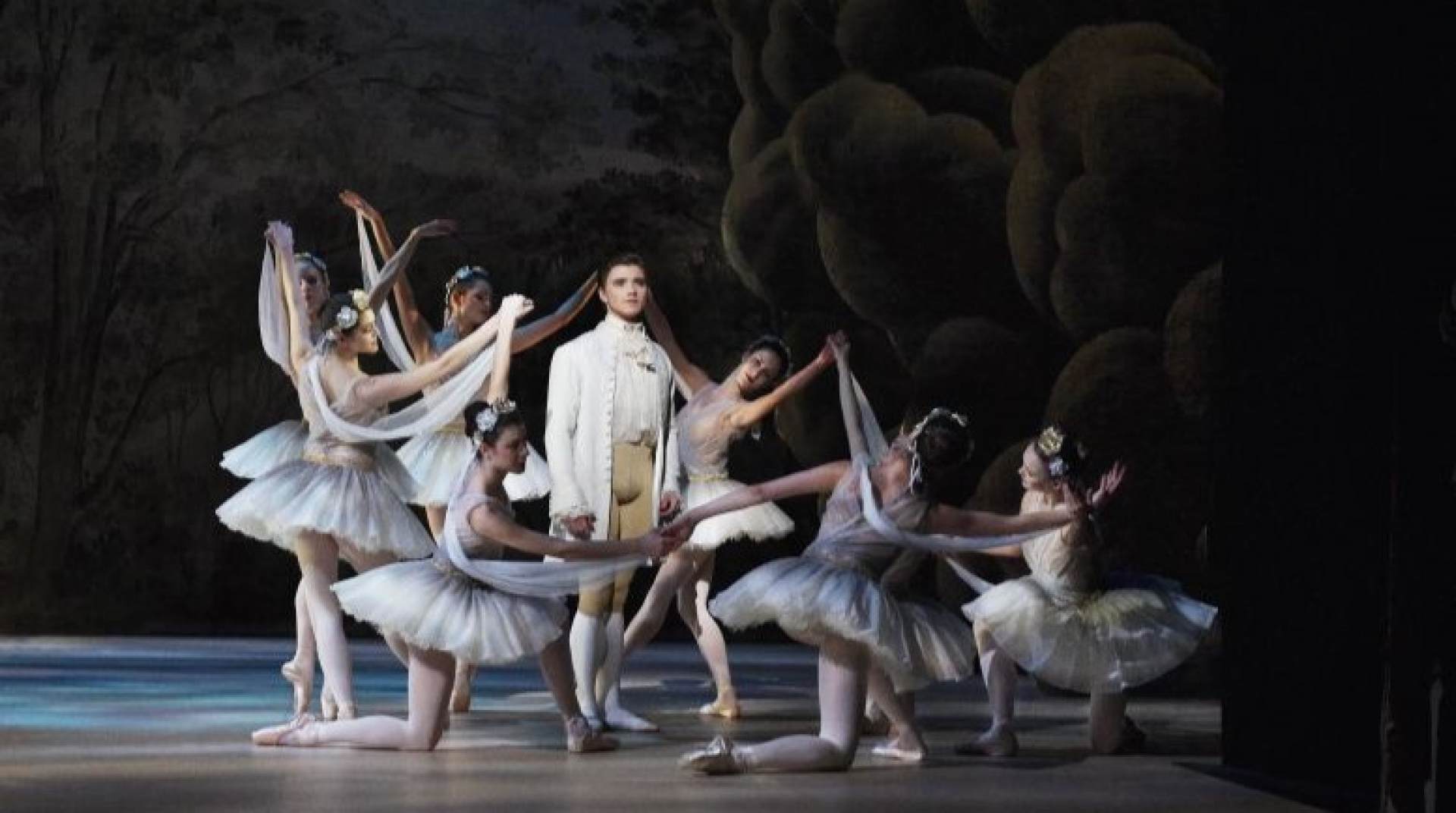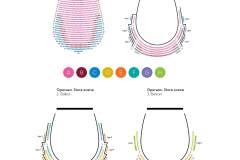The Sleeping Beauty
Mo | Tu | We | Th | Fr | Sa | Su |
The Sleeping Beauty - Ballet
Expected duration: 2 hours and 30 minutes incl. 1 interval
Awaken to the most enchanting ballet fairy tale on the Opera House Main Stage.
The story of The Sleeping Beauty, over 300 years old, is anything but dormant. It thrives vibrantly, and in Christopher Wheeldon's ballet version, the fairytale element is amplified to its fullest.
The story of Sleeping Beauty is well-known: A princess blessed by good fairies with happiness and beauty, yet cursed by an evil fairy to fall into a 100-year slumber within her castle. And the impenetrable thorn hedge that grows around her, which a prince manages to breach, awakening the beauty with a kiss.
Christopher Wheeldon is undoubtedly one of the most original choreographers of our time. In 2012, he crafted his rendition of The Sleeping Beauty tale for the Royal Danish Ballet. Wheeldon excels in creating both grand ballets with numerous dancers and intimate pas de deux, possessing a unique poetic sensibility and magical ability for storytelling.
For Wheeldon, Sleeping Beauty is primarily about balance: The masculine versus the feminine, innocence versus experience, light versus darkness and good versus evil: "One cannot live without the struggle between good and evil. Both must exist in our lives. When good clashes with evil, sparks fly – and it is these sparks that can ignite an artistic fire."
Synopsis
Time: Baroque
Place: Europe
Prologue — Le baptême de la Princesse Aurore
King Florestan XXIV and his Queen have welcomed their first child, Princess Aurora, and declare a grand christening ceremony to honor her. Six fairies are invited to the ceremony to bestow gifts on the child. Each fairy brings a gift of a virtue or positive trait, such as beauty, courage, sweetness, musical talent, and mischief. The most powerful fairy, the Lilac Fairy, arrives with her entourage, but before she can bestow her gift, the evil fairy Carabosse arrives with her minions. Carabosse furiously asks the King and Queen why she had not received an invitation to the christening. The blame falls on Catalabutte, the Master of Ceremonies who was in charge of the guest list. Carabosse gleefully tears his wig off and beats him with her staff, before placing a curse upon the baby princess as revenge: Aurora will indeed grow up to be a beautiful, healthy, delightful young lady, but on her sixteenth birthday she will prick her finger on a spindle and die. The King and Queen are horrified and beg Carabosse for mercy, but she shows none. However, the Lilac Fairy intervenes. Though she does not have enough power to completely undo the curse, she alters it, allowing the spindle to send Aurora into a 100-year deep sleep, rather than death. At the end of those 100 years, she will be woken by the kiss of a handsome prince. Relieved that Aurora's life will ultimately be spared, the court is set at ease.
Act I — Les quatre fiancés de la Princesse Aurore
It is the day of Princess Aurora's sixteenth birthday. Celebrations are underway, though the King is still unsettled by Carabosse's omen. The master of ceremonies discovers several peasant ladies frolicking about with knitting needles and alerts the King, who initially sentences the women to a harsh punishment. The Queen gently persuades him to spare the innocent citizens, and he agrees. An elaborate waltz is performed and Princess Aurora arrives. She is introduced to four suitors by her doting parents. Aurora and the suitors perform the famous Rose Adagio. Presently, a cloaked stranger appears and offers a gift to the princess: a spindle. Having never seen one before, Aurora curiously examines the strange object as her parents desperately try to intervene. As predicted, she pricks her finger. While initially appearing to recover quickly, Aurora is soon sent into sleep. The cloaked stranger reveals herself to be Carabosse, who believes that her curse still stands and that the princess is dead. Once again, the Lilac Fairy quells the hubbub and reminds the King and Queen that Aurora is not dead, but asleep. The princess is carried off to bed, and the Lilac Fairy casts a spell of slumber over the entire kingdom, which will only be broken when Aurora awakens. A thick layer of thorny plants grows over the palace, hiding it from view.
Act II, Scene I — La chasse du Prince Désiré
One hundred years later, Prince Désiré is attending a hunting party. Though his companions are lighthearted, the prince is unhappy and eventually asks to be left alone. On his own in the forest, he is met by the Lilac Fairy, who has chosen him to awaken Aurora. She shows him a vision of the beautiful princess, and the prince is immediately smitten. The Lilac Fairy explains the situation, and Désiré begs to be taken to the princess. The Lilac Fairy takes him to the hidden castle. Carabosse makes one last attempt to cement her vengeful curse, but the Lilac Fairy and the prince manage to defeat her together at last.
Act II, Scene II — Le château de la belle au bois dormant
Once inside the castle, Désiré awakens Aurora with a kiss. The rest of the court wakes as well, and the King and Queen heartily approve when the prince proposes marriage and the princess accepts.
Act III — Les noces de Désiré et d'Aurore
The royal wedding is under way. Guests include the Jewel Fairies: Diamond, Gold, Silver and Sapphire, and of course the Lilac Fairy. Fairytale characters are in attendance, including Puss in Boots and The White Cat, Princess Florine and the Bluebird, and others. Aurora and Désiré perform a grand Pas de Deux, and the entire ensemble dances. The prince and princess are married, with the Lilac Fairy blessing the union.
Program and cast
Conductor: Niklas Hoffmann
Choreographer: Christopher Wheeldon
Set Design: Jérôme Kaplan
Lighting Design: Mary Louise Geiger
Cast - Subject to change
Princess Aurora: Ji Min Hong
Princess Aurora: Emma Riis-Kofoed
Princess Aurora: Holly Dorger
Prince Desiré: Ryan Tomash
Prince Desiré: Andreas Kaas
Prince Desiré: Gregory Dean
Conductor: Niklas Hoffmann
The Copenhagen Opera House
The house is administered by the Royal Danish Theatre and is one of the best-equipped in the world. It has a main stage with five other stages directly connected, where large setups can be moved easily in and out. The theatre can seat between 1492 and 1703, depending on the size of the orchestra. The 1492 seats are all individually angled in order to provide the best experience.
The orchestra pit is one of the largest in any opera house, with room for 110 musicians; the structure provides excellent sound quality for the orchestra. If the pit is filled, some musicians are located just below the front of the stage, which has become controversial among some members of the orchestra (according to tour guides in 2005), because this increases the sound levels, beyond those acceptable in Denmark. However, the overhang is very slight and the authorities have permitted this to happen.
During construction of the theatre, some acoustic tests were carried out with the fire curtain in place while technical work was carried out on stage, but great consideration was given to balance between pit and stage. If the orchestra is small or absent, the pit can be covered and additional seats can be added to the auditorium.
Opera House entrance
Just like the old Royal Danish Theatre in Copenhagen, The Queen has her own box on the left side of the auditorium, closest to the stage. The foyer has been designed for comfort, based on behavioural research on opera goers maximizing the wall area for standing against, while still providing views across the entire foyer and one of the best views on Copenhagen. Guided tours cover most of the building, including both the auditorium and backstage areas.

 EN
EN DE
DE IT
IT FR
FR ES
ES RU
RU JP
JP RO
RO
 Seating plan
Seating plan 
